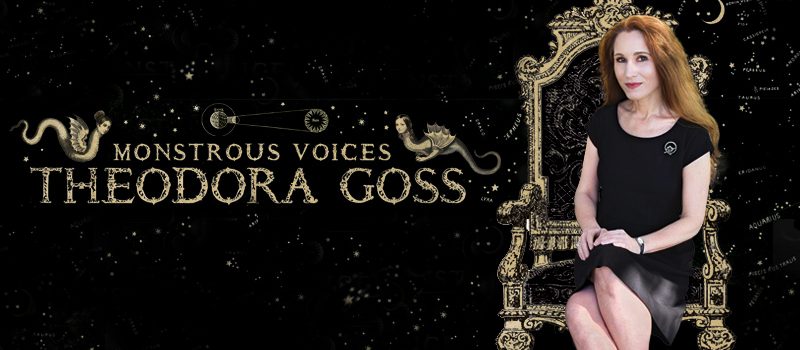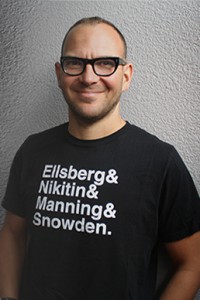Theodora Goss: Monstrous Voices

Theodora Goss was born Teodóra Eszter Muszbek, September 30, 1968 in Budapest, Hungary. She left with her mother and brother at age five, and lived in Italy and Belgium before immigrating to the US when she was seven. They lived in New York, Pennsylvania, and Maryland before settling in Virginia. She graduated from the University of Virginia in 1990 with an English degree, then attended Harvard Law School and worked as a lawyer in New York and Boston for four years. She went to Boston University for an English master’s degree, and completed her PhD there in 2012. In 1992 she married Kendrick Goss (divorced 2013), and they have a daughter, Ophelia.
Goss lives in Boston, where she works as a professor at Boston University. She also teaches at the Stonecoast MFA program.
Excerpts from the interview:
“My PhD dissertation was called The Monster in the Mirror: Late Victorian Gothic and Anthropology. I studied Victorian literature, and also developed a kind of subspecialty in the Gothic and the fantastic. There was a particular time period, approximately 1870-1910, when most of these famous texts about monsters were written. We have Carmilla in 1872, The Picture of Dorian Gray in the 1890s, Dracula in the 1890s, The Strange Case of Dr. Jekyll and Mr. Hyde in the 1880s, and texts about mummies and ghost stories in this period. It was a great flowering of gothic fiction – flowering as in Morticia-Addams-type roses. The outlier is Frankenstein, because Frankenstein is at the other end of the century – it’s part of the first Gothic revival, and this was a second Gothic revival.
“It was this great re-return of gothic fiction, and I started asking why. My hypothesis was that if you see something starting to happen in the 1870s, you have to ask what was happening in the 1860s. That was the rise of anthropology as a discipline, which is the study of what it means to be human and to have human culture, and how you define the limits of being human. Thinking about human culture in an evolutionary way, post-Darwin, gives us this flourishing of monsters at the end of the century.
“The fun thing about The Strange Case of the Alchemist’s Daughter was that I was writing about Victorian science. It wasn’t modern science. I take as given the things the Victorians thought were true, many of which we know are not true. It’s like Victorian science fiction. This comes partly out of my writing about H.G. Wells. Wells was part of my dissertation – I wrote on The Island of Dr. Moreau, which was so much fun. With Dr. Moreau, Wells is talking about whether or not it would be possible to transform humans into animals. He didn’t know – they didn’t know back then. He thought it might not be possible, but it was at least plausible. The science is real for the time period. I have an argument going with James Patrick Kelly. He doesn’t think I write science fiction. I keep telling him I do write science fiction, because he’s a former teacher of mine, and it’s part of my job to annoy my former teacher. But I’m writing historical science fiction. It’s scientific romance. It’s not magic. There are logical explanations for all the science.
“What I noticed as I was looking through these monstrous texts – and you go in deep when you’re writing a doctoral dissertation – was that there are an awful lot of mad scientists. Most of the monsters were created by mad scientists, so this is the rise of mad science, which is awesome, but also they keep creating (or intending to create, or almost creating) female monsters. There’s something weird going on with the female monsters. We were talking just recently at the International Conference on the Fantastic in the Arts about Frankenstein’s female creature. He starts to create her, but then he changes his mind. There’s a specific paragraph in Frankenstein that really inspired me for this project, which is about giving voices to monstrous women. It’s the passage where Victor Frankenstein decides not to create his female creature after all, and he literally takes her body apart. He disassembles her, and he doesn’t want to get caught with a bunch of female body parts, so he throws them into the sea. It’s one paragraph, and there’s this violence under the text that, unless you’re looking for it, you don’t really notice – the fact that he’s taking a woman’s body apart. She’s not even allowed to exist. She’s silenced before she can exist because she’s so threatening. He finds her threatening because she might mate with humans – if she doesn’t like the male monster, she might prefer men. Victor doesn’t explain exactly what he means by that concern. What would she do? Might she be seductive to men? Might she be violent toward men? What is the danger of her preferring men? The male monster might get mad because she’s rejecting him, but clearly she poses a danger that is bigger than the danger posed by the male monster. Frankenstein is so afraid he can’t even create her. Then there’s The Island of Dr. Moreau. Moreau is creating a woman out of a puma, and we tend to forget that the puma woman breaks free, kills Moreau, and is then killed herself. She never says anything. She is punished, but she’s the only one who rebels against Moreau. That’s another fascinating character who never gets to say anything. Then there’s Carmilla, the vampire in Sheridan LeFanu’s Carmilla. She gets to talk. We very rarely get the actual monster’s perspective in these texts, but Carmilla, several times, explains that she believes not in religion, but in nature. She’s a scientist, basically. She says this fascinating thing to her victim, Laura. Laura says she’s afraid to die, and Carmilla explains she should not be afraid to die, because girls are caterpillars while they live in the world, to be butterflies when summer comes. Carmilla is saying that a living girl in this world is like a caterpillar, and then she transforms into something like a butterfly. What is the mature form of a girl for Carmilla? It’s a vampire. A girl is an immature form of a vampire. A vampire is the beautiful, free, reproductive form of a girl, in which she can create more vampires. There is this whole thing going on with Carmilla that is just under the surface of the story. She’s got almost a vampire philosophy, and a totally different perspective on what it means to be a young woman in Victorian society than everyone else has. Now Carmilla, she’s decapitated. You have to take women apart, maybe because their bodies are so dangerous. The same thing with the puma woman – Moreau was creating a woman’s body out of a puma’s body. There’s something about the body. In art of this time you find over and over again these pictures of dangerous, seductive, monstrous women. Sirens and mermaids – they usually have a beautiful half-naked human body, you can often see their bare breasts, and then they have an animal body. The body of the woman is alluring and dangerous at the same time.
“Then you have Beatrice Rappaccini, one of my favorite characters, who also does not get to tell her story. Giovanni, who is in love with her, tells her story. She’s a young woman, and there’s a place where her father, the scientist Dr. Rappaccini, tells her, ‘Look, I’ve made you strong.’ Yeah, you’ve made her strong, but you’ve also made her poisonous. She can’t have any relationships, including with Giovanni. You’ve made her strong without her consent. That’s the other issue here. Consent is such an important concept for us nowadays. Beatrice talks about that in the second book, European Travel for the Monstrous Gentlewoman. She says, ‘None of us consented to what was done to us. We were made and we were changed without our consent.’
“Those are some of the female monsters I was interested in, and I noticed they were silenced. They didn’t get to tell their own stories. There’s another that appeared in the short story I started with, ‘The Mad Scientist’s Daughter’, published in Strange Horizons – Helen Vaughn. A lot of people don’t know about her. She appears in a short story by Arthur Machen called ‘The Great God Pan’. People have asked me why I cut her out of the novel, and I say she’s secretly in there – you just don’t realize it until later. In a way, narratively, she was too powerful to appear in the novel, even though she functioned just fine in the short story. She’s the daughter of a woman who was experimented on by a Dr. Raymond. He took a poor orphan girl, who became his ward, and performed brain surgery on her so she could see beyond the limits of our reality. He calls it ‘seeing the Great God Pan.’ It’s basically seeing beyond our world into the spiritual realm. He cuts part of her brain, and she wakes up after the surgery, sees into the spiritual world, and immediately goes mad. She bears a child, and there’s this implication that it might be Dr. Raymond’s child – it’s not entirely clear.
“The child is Helen, and Helen has the power to bring aspects of that other world into our reality. It’s the pagan world, the pre-Christian, pre-rational world. If you think of it in slightly later terms, she’s bringing the Jungian collective unconscious into the world. That world drives people mad, and they’re very afraid of that world, because it contradicts Victorian rationality. She’s another monster. In the end she’s killed, in probably the most horrific way, by a group of men. They all get together, they have a killing party, and they force her to hang herself. That’s reminiscent of another monster who is not in my first novel – but she’s coming – Lucy Westenra, who was in Dracula. She was also killed by a group of men, ritually staked and decapitated, while they literally read the Bible over her. Critics have talked about how this scene is presented. You have Arthur Holmwood staking her over and over again, driving the stake into her with a hammer, and when you check the dates in the manuscript, it was on the night that should have been her wedding night with him. It’s this orgy of sex and death, killing the female monster with a parody of heterosexual intercourse. The Victorians were crazy, writing this stuff. If you’re a woman writer writing nowadays, what do you do with all this? You have to reclaim it. I love these texts. I love them dearly because Gothic texts always turn themselves inside out, undercut themselves, they’re always ambiguous, and I love that. The monsters may die on the page, but they linger in your mind.”
Interview design and photo by Francesca Myman.
Read the complete interview in the June 2018 issue of Locus.
 While you are here, please take a moment to support Locus with a one-time or recurring donation. We rely on reader donations to keep the magazine and site going, and would like to keep the site paywall free, but WE NEED YOUR FINANCIAL SUPPORT to continue quality coverage of the science fiction and fantasy field.
While you are here, please take a moment to support Locus with a one-time or recurring donation. We rely on reader donations to keep the magazine and site going, and would like to keep the site paywall free, but WE NEED YOUR FINANCIAL SUPPORT to continue quality coverage of the science fiction and fantasy field.








